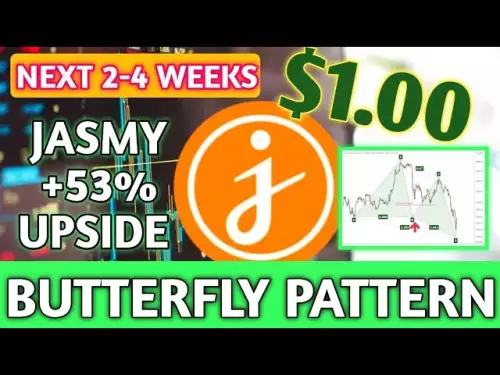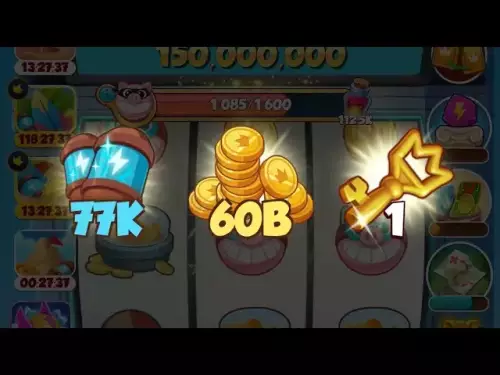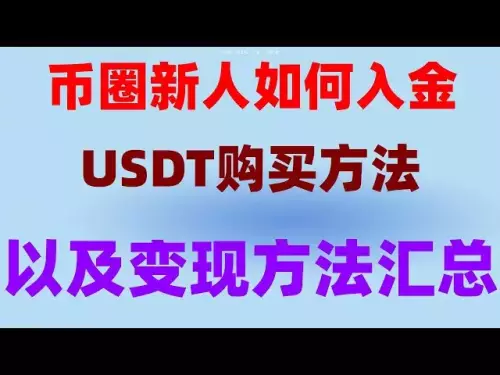-
 Bitcoin
Bitcoin $109900
-2.75% -
 Ethereum
Ethereum $4415
-6.71% -
 XRP
XRP $2.882
-4.42% -
 Tether USDt
Tether USDt $1.000
0.04% -
 BNB
BNB $844.3
-3.58% -
 Solana
Solana $188.4
-9.01% -
 USDC
USDC $0.9998
-0.01% -
 TRON
TRON $0.3419
-4.56% -
 Dogecoin
Dogecoin $0.2108
-8.30% -
 Cardano
Cardano $0.8421
-7.14% -
 Chainlink
Chainlink $23.40
-10.55% -
 Hyperliquid
Hyperliquid $43.36
-5.91% -
 Stellar
Stellar $0.3888
-4.14% -
 Ethena USDe
Ethena USDe $1.001
0.01% -
 Sui
Sui $3.376
-7.30% -
 Bitcoin Cash
Bitcoin Cash $545.6
-6.49% -
 Hedera
Hedera $0.2352
-4.25% -
 Avalanche
Avalanche $23.47
-8.12% -
 UNUS SED LEO
UNUS SED LEO $9.575
0.25% -
 Litecoin
Litecoin $110.0
-6.28% -
 Toncoin
Toncoin $3.156
-4.28% -
 Shiba Inu
Shiba Inu $0.00001211
-6.17% -
 Uniswap
Uniswap $9.759
-9.85% -
 Polkadot
Polkadot $3.779
-7.54% -
 Dai
Dai $1.000
0.00% -
 Cronos
Cronos $0.1556
-2.12% -
 Bitget Token
Bitget Token $4.492
-3.22% -
 Monero
Monero $264.8
-3.87% -
 Aave
Aave $318.3
-8.29% -
 Ethena
Ethena $0.6299
-8.25%
How to use KDJ to trade pullbacks in an uptrend?
The KDJ indicator helps crypto traders identify oversold pullbacks in uptrends, with bullish crossovers below 20 signaling high-probability long entries when confirmed by volume and support.
Aug 05, 2025 at 11:07 pm
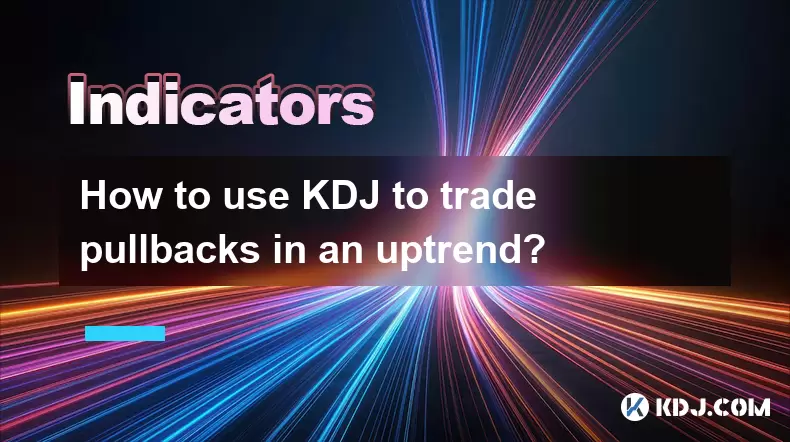
Understanding the KDJ Indicator in Cryptocurrency Trading
The KDJ indicator is a momentum oscillator widely used in technical analysis, especially within the cryptocurrency market. It is derived from the Stochastic Oscillator and consists of three lines: %K (the fast line), %D (the slow line, which is a moving average of %K), and %J (a weighted value reflecting the divergence between %K and %D). The KDJ helps traders identify overbought and oversold conditions, making it particularly useful when trading pullbacks during an established uptrend.
To apply the KDJ effectively, traders must first understand its components. The %K line is calculated by comparing the closing price to the price range over a specified period, usually 9 candles. The %D line is a 3-period moving average of %K, smoothing the signal. The %J line is computed as 3 × %K – 2 × %D, amplifying the sensitivity to price movements. When %K crosses above %D in the oversold zone (typically below 20), it may signal a bullish reversal. Conversely, when %K crosses below %D in the overbought zone (above 80), it suggests a potential downturn.
In the context of cryptocurrency trading, where volatility is high and trends can reverse quickly, the KDJ offers a dynamic way to spot short-term reversals within a larger trend. This makes it ideal for identifying pullback entry points in an ongoing uptrend.
Identifying an Uptrend Using Price Action and Moving Averages
Before using the KDJ for pullback trading, it is essential to confirm that the market is in a sustained uptrend. This can be done by analyzing price action and key technical indicators. Look for a series of higher highs and higher lows on the chart, which is a classic sign of bullish momentum.
Additionally, use moving averages to validate the trend direction. The 50-period and 200-period Exponential Moving Averages (EMA) are commonly used. When the shorter EMA (50) is above the longer EMA (200), it confirms a bullish trend. This configuration is often referred to as the "golden cross" and strengthens the case for buying on pullbacks.
Ensure that volume supports the uptrend. Rising volume during upward price movements and declining volume during pullbacks suggest that the trend is healthy and likely to continue. Only when these conditions are met should you consider using the KDJ to time your entries.
Setting Up the KDJ Indicator on a Trading Platform
To begin using the KDJ indicator, you must first configure it correctly on your trading platform. Most platforms like TradingView, Binance, or MetaTrader support custom indicators or have KDJ available in their built-in library.
- Open your preferred charting platform and load the cryptocurrency pair you wish to trade.
- Click on the "Indicators" button and search for "Stochastic" or "KDJ".
- If only Stochastic is available, manually adjust the settings to match KDJ parameters: set the %K period to 9, %D period to 3, and apply a smoothing method (usually Simple Moving Average).
- To display the %J line, you may need to add a custom formula: 3 %K – 2 %D. This can be done using the platform’s scripting language (e.g., Pine Script on TradingView).
- Adjust the overbought and oversold levels to 80 and 20, respectively, for clearer signal identification.
Once set up, the KDJ will appear beneath the price chart with three lines fluctuating between 0 and 100. Focus on the interaction between %K and %D, along with their position relative to the 20 and 80 thresholds.
Spotting Pullback Entries Using KDJ Signals
When the market is in an uptrend, pullbacks present low-risk entry opportunities. The KDJ helps identify these moments by signaling short-term exhaustion in selling pressure.
- Wait for the price to retrace downward within the uptrend, ideally touching a support level or a rising trendline.
- Observe the KDJ indicator: look for the %K line to drop below 20, entering the oversold zone.
- Confirm that the %K line crosses above the %D line while both are still below 20. This bullish crossover suggests momentum is shifting back upward.
- Check the %J line: if it plunges deeply below 0 and then starts rising, it can act as an early confirmation of reversal strength.
- Enter a long position when the candle closes after the crossover, ensuring that volume begins to increase.
Place a stop-loss just below the recent swing low of the pullback to manage risk. Set a take-profit level near the previous resistance or use a trailing stop to capture further upside as the trend resumes.
Filtering False Signals with Additional Confirmation Tools
The KDJ, while powerful, can generate false signals in choppy or sideways markets. To improve accuracy, combine it with other tools.
- Use candlestick patterns such as bullish engulfing, hammer, or morning star formations that align with the KDJ crossover.
- Confirm with support and resistance levels: a pullback ending at a well-established support zone increases the probability of a successful trade.
- Incorporate volume analysis: a drop in selling volume during the pullback followed by a surge in buying volume upon reversal strengthens the signal.
- Apply RSI (Relative Strength Index) as a secondary oscillator. If RSI is also rising from below 30, it corroborates the KDJ’s bullish signal.
Avoid trading KDJ signals if the price is near major resistance or if broader market sentiment (e.g., Bitcoin dominance or macro news) is bearish. These filters reduce the risk of entering during a trend reversal disguised as a pullback.
Managing Risk and Position Sizing in KDJ-Based Trades
Even with strong signals, risk management is critical in cryptocurrency trading due to high volatility. Never risk more than a small percentage of your capital on a single KDJ-based pullback trade.
- Determine your entry, stop-loss, and take-profit levels before placing the trade.
- Calculate the distance between entry and stop-loss to define your risk per trade.
- Adjust your position size so that the monetary risk stays within your predefined limit (e.g., 1–2% of total capital).
- Consider using partial profit-taking: close 50% of the position at the first resistance and let the rest run with a trailing stop.
Avoid overtrading by waiting for high-probability setups. Not every pullback in an uptrend is tradable—only those with converging KDJ signals and supporting factors should be acted upon.
Frequently Asked Questions
What timeframes work best for KDJ pullback trading in crypto?
The 1-hour and 4-hour charts are ideal for swing trading pullbacks using KDJ. Lower timeframes like 5-minute or 15-minute increase noise and false signals, while daily charts may miss timely entries.
Can KDJ be used on all cryptocurrencies?
Yes, KDJ can be applied to any cryptocurrency, but it works best on high-liquidity pairs like BTC/USDT or ETH/USDT. Low-volume altcoins often exhibit erratic price movements that can distort KDJ readings.
How do I adjust KDJ settings for different market conditions?
In highly volatile markets, consider increasing the %K period to 14 for smoother signals. During low volatility, reduce it to 5 for faster responses. Always backtest changes on historical data before live trading.
Is KDJ effective during news events or halvings?
During major news events, KDJ may give premature signals due to sudden spikes. It is advisable to pause KDJ-based entries during such periods or combine it with volatility filters like Bollinger Bands.
Disclaimer:info@kdj.com
The information provided is not trading advice. kdj.com does not assume any responsibility for any investments made based on the information provided in this article. Cryptocurrencies are highly volatile and it is highly recommended that you invest with caution after thorough research!
If you believe that the content used on this website infringes your copyright, please contact us immediately (info@kdj.com) and we will delete it promptly.
- Heritage Distilling's Token Deal: A Bold Balance Sheet Strategy
- 2025-08-26 06:45:14
- Coinbase Hack, Solana Shenanigans, and Wallet Woes: What's a Crypto OG to Do?
- 2025-08-26 06:45:14
- Bitcoin, Institutional Adoption, and Volatility: A 2025 Perspective
- 2025-08-26 08:05:14
- MAGACOIN, Ethereum, and XRP Growth: What's the Buzz?
- 2025-08-26 08:30:13
- ETHZilla's Bold Moves: Share Buyback and Ethereum Holdings Under Scrutiny
- 2025-08-26 08:05:14
- Cardano, ADA Price, and the ETH L2 Meme Coin Frenzy: What's Next?
- 2025-08-26 08:50:13
Related knowledge
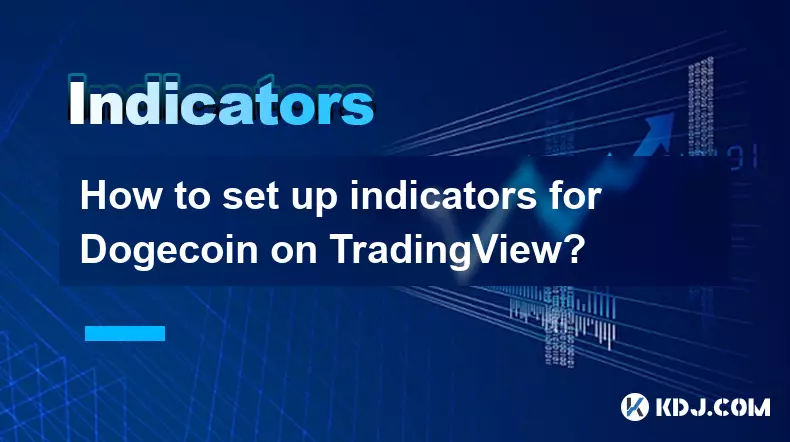
How to set up indicators for Dogecoin on TradingView?
Aug 25,2025 at 04:23pm
Understanding Dogecoin and TradingView1. Dogecoin, initially created as a meme-based cryptocurrency, has evolved into a widely traded digital asset. I...

What does it mean when the +DI and -DI cross frequently in the DMI indicator but the ADX is flattening?
Aug 11,2025 at 03:15am
Understanding the DMI Indicator ComponentsThe Directional Movement Index (DMI) is a technical analysis tool composed of three lines: the +DI (Positive...

What does the sudden appearance of a "dark cloud cover" candlestick pattern during an uptrend indicate?
Aug 13,2025 at 11:35am
Understanding the 'Dark Cloud Cover' Candlestick PatternThe dark cloud cover is a bearish reversal pattern in technical analysis that typically appear...

What does it mean when the moving average, MACD, and RSI all send buy signals simultaneously?
Aug 11,2025 at 01:42pm
Understanding the Convergence of Technical IndicatorsWhen the moving average, MACD, and RSI all generate buy signals at the same time, traders interpr...

What does it mean when both the KDJ indicator and the RSI show overbought signals simultaneously?
Aug 13,2025 at 11:35am
Understanding the KDJ Indicator in Cryptocurrency TradingThe KDJ indicator is a momentum oscillator derived from the Stochastic Oscillator, widely use...

What does it mean when the price is trading above the SAR indicator but the red dots are densely packed?
Aug 09,2025 at 11:49pm
Understanding the SAR Indicator and Its Visual SignalsThe SAR (Parabolic Stop and Reverse) indicator is a technical analysis tool used primarily to de...

How to set up indicators for Dogecoin on TradingView?
Aug 25,2025 at 04:23pm
Understanding Dogecoin and TradingView1. Dogecoin, initially created as a meme-based cryptocurrency, has evolved into a widely traded digital asset. I...

What does it mean when the +DI and -DI cross frequently in the DMI indicator but the ADX is flattening?
Aug 11,2025 at 03:15am
Understanding the DMI Indicator ComponentsThe Directional Movement Index (DMI) is a technical analysis tool composed of three lines: the +DI (Positive...

What does the sudden appearance of a "dark cloud cover" candlestick pattern during an uptrend indicate?
Aug 13,2025 at 11:35am
Understanding the 'Dark Cloud Cover' Candlestick PatternThe dark cloud cover is a bearish reversal pattern in technical analysis that typically appear...

What does it mean when the moving average, MACD, and RSI all send buy signals simultaneously?
Aug 11,2025 at 01:42pm
Understanding the Convergence of Technical IndicatorsWhen the moving average, MACD, and RSI all generate buy signals at the same time, traders interpr...

What does it mean when both the KDJ indicator and the RSI show overbought signals simultaneously?
Aug 13,2025 at 11:35am
Understanding the KDJ Indicator in Cryptocurrency TradingThe KDJ indicator is a momentum oscillator derived from the Stochastic Oscillator, widely use...

What does it mean when the price is trading above the SAR indicator but the red dots are densely packed?
Aug 09,2025 at 11:49pm
Understanding the SAR Indicator and Its Visual SignalsThe SAR (Parabolic Stop and Reverse) indicator is a technical analysis tool used primarily to de...
See all articles





















